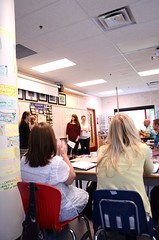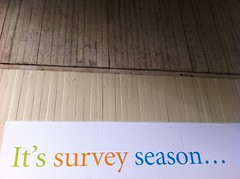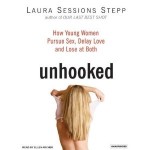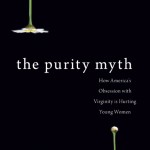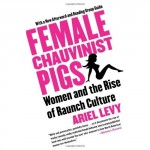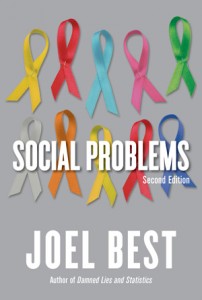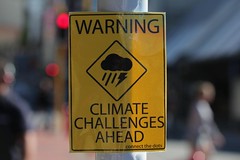Looking for some ideas on how use Contexts articles in the classroom? A few years ago, Kia and I created/compiled various active learning exercises and case studies to accompany Contexts articles. Most (if not all) of these activities have been posted as separate blog items, but we thought it may be useful to provide them all together as one document, found here.
Hi all! Before explaining the activity below, I wanted to let you know that I’ll be posting from Kigali, Rwanda, for the next month and a half. I’m conducting dissertation interviews and interning with the National Research Center on Genocide; if you’re interested, you can follow the travels here. Thanks!
************************************************************************************************************************
With the start of classes right around the corner, we thought it’d be useful to post a potential activity for the first day. This activity, human bingo, was developed by some University of Minnesota graduate students and can easily be modified. Essentially, it’s a good way to get students talking to one another and start creating a positive environment in the classroom. In addition, the survey attached to the activity allows you to get to know your students right away. Here you can find a copy of the activity, Human Bingo.
I’ve also asked students to share the most interesting place they’ve been, which has resulted in some fun conversations. We’d love to hear your first day activities as well!
Here’s another great podcast that I’ll be using in my Families class this fall!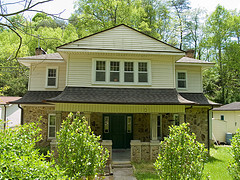
We interviewed Professor Katherine Newman about her book The Accordion Family: Boomerang Kids, Anxious Parents, and the Private Toll of Global Competition. In this book, she and a team of researchers explore why, in the world’ wealthiest countries, an increasing number of adults in their twenties and thirties are moving back in with their parents. She compares the incidence of accordion families in Italy, Spain, Denmark, Sweden, Japan, and the U.S.
I suggest having students listen to the podcast at home (in lieu of a reading) and answer these questions to prepare them for a class discussion:
1. What is an accordion family? What is a boomerang child? Which countries have high rates of accordion families? Which countries have low rates?
2. Why is it difficult to conduct the same survey in multiple countries? What was one difficulty that Newman and her research team faced? How did she attempt to alleviate this?
3. What are the conventional “markers of adulthood” and how have they changed? For example, why are boomerang children considered “adults” even though they do not have the “markers of adulthood”?
4. According to Newman’s findings, how are immigration and accordion families interconnected?
5. Newman gives a few reasons why, in the United States, parents and children have adapted well to the accordion family structure. What are these reasons?
6. How does social class matter when it comes to accordion families? Newman gives several examples.
7. Which countries have adjusted well to accordion families and which have resisted this new family structure?
8. What makes Japan so unique when it comes to perceptions of accordion families?
9. In Nordic countries, what prevents accordion families?
10. What recommendations does Professor Newman make for U.S. social policy?
11. According the Prof. Newman, are accordion families on the way out?
Here are some additional resources on Professor Newman’s findings:
- Article from The New York Times profiling the book along with Eric Klinenberg’s book Going Solo (see our Teaching Post and Podcast with Klinenberg here!)
I ran across this wonderful resource written by Jon Smajda a number of years ago. Some of it is a little dated, but it’s a great compilation of resources for media in the classroom.
In the 7th grade, I had this really terrible teacher who would show movies about once or twice a week. He’d sit in the back of class and read the newspaper and my friends and I would pass notes, draw caricatures of the teacher, or simply make plans for after school: anything but actually watch the movie.
Unfortunately, this is (more or less) the image most people have in their heads of showing movies in class: a day off for both the teacher and the students. Of course, many of us show hour-long films in our classes and our students manage to avoid spitball fights and get a lot out of the film. This is one advantage of teaching college students and not 7th graders.
However, there are other options for using videos in class. For instance, short film clips can be a great way to illustrate a concept or to start discussion. Back in the old days when we had to haul around the A/V cart to show a video in class, it wasn’t necessarily worth the effort just to show a two minute clip. However, now that all our classrooms are hopefully equipped with projectors, DVD players and laptop adapters, it may be time to rethink the ways we can utilize video in teaching.
Television in the classroom
Television series are a standard that highlight both contemporary and historical social trends in an organized and narrative fashion, making them ideal for use within the classroom. Whereas other types of filmed media (such as feature length films and documentaries) are often too long to show during a single classroom period, episodes or segments from a television series are usually short enough to be played in their entirety, thus preserving the director’s intended messages while still leaving time for lecture and classroom discussion. Additionally, each episode or segment often represents a completely new theme or issue, allowing for instructors to return to television series that students are familiar with and were also successful in promoting student engagement in the past.
Video Sources
In addition to simply bringing in DVDs and showing short clips that illustrate sociological concepts or could serve as a springboard for further discussions or debate, here are some other sources to try out:
iTunes Podcasts – If you download iTunes and go to the iTunes Store, there’s a “Podcasting” section and within that there’s a section for Video Podcasts. A lot of news organizations and other semi-serious outlets are producing free video podcasts of their content.
Hulu – Hulu.com is an effort by NBC & Fox to make their TV shows available for free online & there’s a lot there: from new TV shows to an archive of lots of old TV shows and many full-length movies. You cannot download the movies, which is a shame, but you can embed the clips into your own website and there’s a cool feature where you can set which portion of the clip plays in your embedded instance of the clip, which is very cool if you wanted to, say, embed a clip on your class website and only want your students to focus on one part of the clip.
Network TV – Hulu is good for NBC & Fox shows, but an increasing number of shows on CBS (CBS.com) and ABC (ABC.com) are freely available for online viewing.
PBS Frontline – http://www.pbs.org/wgbh/pages/frontline/view/ – Dozens of episodes of Frontline available for free viewing online.
Joost – http://joost.com – Kind of like Hulu, but not as cool or as user-friendly.
YouTube – Obviously, there’s YouTube. Google video tends to have more serious/professional stuff, whereas youtube has more homemade videos.
video.google.com – A growing collection of videos online by google. Search for anything – see what you can find. (You can download most clips to your hard drive as well.)
TED Talks – http://www.ted.com/talks – About TED: “TED stands for Technology, Entertainment, Design. It started out (in 1984) as a conference bringing together people from those three worlds. Since then its scope has become ever broader. The annual conference now brings together the world’s most fascinating thinkers and doers, who are challenged to give the talk of their lives (in 18 minutes). This site makes the best talks and performances from TED available to the public, for free. Almost 150 talks from our archive are now available, with more added each week. These videos are released under a Creative Commons license, so they can be freely shared and reposted.”
Miro – http://www.getmiro.com/ – Miro is a free, open source video application that is integrated with thousands of free video feeds from all over the internet. It’s sort of like iTunes and the iTunes store, only everything is free.
http://freedocumentaries.org – You guessed it, free documentaries online.
Archive.org – This site is a massive collection of free online video, audio and text. Within the video section, there are some subcollections that may be of interest to some of you:
“The Beat Within” – http://www.archive.org/details/beatwithin – video diaries of young people inside the California prison system.
“Shaping San Francisco” – http://www.archive.org/details/shaping_sf – A “participatory social history of San Francisco.” Short films covering many aspects of the city and its history.
“Cinemocracy” – http://www.archive.org/details/cinemocracy – a collection of 1940s pro-war propaganda films, by some of the best directors of the time and commissioned by the US government directly.
“Mosaic Middle East News” – http://www.archive.org/details/mosaic – collection of television news clips from throughout the Middle East, translated into English.
“Media Burn” – http://www.archive.org/details/media_burn – “over 3000 hours of material reflecting historical, political and social reality as seen by independent producers from 1972 to 2002, almost entirely without a narrator or news announcer. It is a major dose of American studies, media history and electronic literacy.”
Movie Trailers – http://www.apple.com/trailers – Movie trailers provide short, but information-packed, previews of movies that can be fascinating when put under a sociological microscope. Whether you’re interested in representations of race, gender or class or in consumerism and marketing, movie trailers often offer quick, fun examples.
Old TV Commercials – http://x-entertainment.com/downloads/ – A collection of old commercials from the 1980s, with an especially large collection of advertising directed at children.
Richard Beach’s Teaching Media site – http://www.tc.umn.edu/~rbeach/teachingmedia/ – Beach is a professor in the U’s Department of Curriculum and Instruction and he’s written a textbook on how to teach media literacy. This is his website for the book, and it’s full of links to video materials as well as ideas for how to integrate them into your classes. For example, Modules 4, 5 and 6 introduce critical approaches to interpreting media representations and advertising, while Module 7 discusses how to talk about the role of ideology in various film genres.
Comedy Central – www.comedycentral.com – Comedy Central puts a lot of video clips from their shows online. Many, of course, are probably useless in the classroom, but some of their shows frequently have some clever social commentary, such as The Daily Show, http://www.comedycentral.com/shows/the_daily_show/index.jhtml, and The Colbert Report –http://www.comedycentral.com/shows/the_colbert_report/index.jhtml.
Media Education Foundation – http://www.mediaed.org/videos/index_html – Contains short preview videos to most of their videos.
The roundtable “Polling, Politics, and the Populace” is a great overview of the insights sociologists can provide to polling. While there are several aspects you could discuss the classroom, one of the key points highlights the difficulty of asking questions. To illustrate this, students could create a few survey questions in class after reading the roundtable.
Have the entire class brainstorm a topic and audience for a fictitious survey. Then, have students break into groups. Each group should develop three questions about the topic. After 10 minutes, ask each group to write their questions on the board. Then, discuss the questions as a class. Are they closed or open-ended (you could also specify this in the directions so all are closed-ended), and why might this matter? What do they measure? How are they different? Are there ambiguous words, jargon, or other confusing aspects? Would there be difficulties with in-person polling? Etc.
Yesterday in my Sociology of Gender class, we had a discussion on the Contexts article “Is Hooking Up  Bad for Young Women?” by Elizabeth A. Armstrong, Laura Hamilton and Paula England (full text free on contexts.org). To get the discussion going, I showed clips of three journalists that the authors mention in the article–each with different perspectives on the sexual cultures of teen and young adult women.
Bad for Young Women?” by Elizabeth A. Armstrong, Laura Hamilton and Paula England (full text free on contexts.org). To get the discussion going, I showed clips of three journalists that the authors mention in the article–each with different perspectives on the sexual cultures of teen and young adult women.
As we watched, I had the students record the main arguments of the authors.
Then, after each video, I gave them 3-5 minutes to brainstorm about how the arguments relate to class material (especially the “Hooking Up” article, but anything from class) AND to brainstorm about personal observations (or “evidence”) that would either support or refute that argument.
VIDEO CLIPS:
1) Interview with Laura Sessions Stepp, author of Unhooked: How Young Women Pursue Sex, Delay Love, and Lose at Both (2007).
2) Trailer for Jessica Valenti’s film The Purity Myth (2011), inspired by her book of the same title (2010)
After watching all three, I had them get into groups of 2 or 3 and share their observations with the group. Then, as group, they were instructed to decide on three arguments total that they feel their group has the strongest “evidence” to support or refute. (This worked really well and when I cut them off after 10 minutes, many groups were still discussing). Give them a handout like this to record their group’s decisions:
ARGUMENT #1
Author’s argument:
Evidence to support or refute:
(from class material AND personal observation)
The 2012 election this fall will afford many opportunities to connect concepts learned in the classroom to events outside of it. In the most recent episode of Office Hours, Kia Heise and Lisa Gulya speak with Professor Enid Logan about her book, “At This Defining Moment”: Barack Obama’s Presidential Candidacy and the New Politics of Race. Like other episodes of Office Hours, this podcast could be assigned in place of or in addition to reading. It could also be played in the classroom. We suggest the first twenty minutes (or so), though we would welcome your input on which parts of the podcast you chose to play.
1) What are the new politics of race, and how do they differ from those in the past? What does Logan say that this means for African American politicians and middle class blacks? Why are these prescriptions particularly directed at blacks in America?
2) Logan mentions the term “intersectionality.” What does that term mean?
3) What is ‘colorblind racism’ and how, according to Logan, has colorblind racism been central to Obama’s presidency?
4) What does Logan have to say about the respective importance of race and gender to liberalism in the United States? Explain Logan’s conclusion that Obama won the election because he ‘did race’ better than Clinton ‘did gender.’ Why, according to Logan, was voting for Obama redeeming to many white Americans?
5) During the 2008 election, Republican candidates claimed they were defending “real” America. Is Mitt Romney able to do this? Why or why not? What does Logan say about Obama’s populist appeal?
6) With the vast demographic changes in the United States, what does Logan say about how conceptions of ‘whiteness’ have changed for many white Americans?
7) Logan forecasts that race will not play as prominent a role in the 2012 election as it did in the 2008 election. Why is this the case? Based on what you have seen, do you agree?
8) What does the term ‘differential racialization’ mean? How does class make a difference? Based on what you have learned from this podcast, where does Obama fall in this formulation and why?

In May, we cross-posted a special edition of Office Hours from the all new Contexts Podcast. In this interview, Jessica Streeter speaks with Henry H. Brownstein and Timothy M. Mulcahy, co-authors of the Winter 2012 Contexts feature, Home Cooking: Marketing Meth.
This podcast or feature article (check if your university library has access to Contexts) would work well on its own in any criminal justice or deviance course. But what really struck me while listening to this podcast is how similar their findings are to the show Breaking Bad.

For those not familiar with the show, Breaking Bad tells the story of a square high school chemistry teacher who, when diagnosed with lung cancer, turns to a life of crime and begins to cook and sell meth to ensure his family’s financial security after he dies.
The authors of Home Cooking: Marketing Meth set up an interesting sociological question of why meth markets are so different from other drug markets. You could show an episode of the Breaking Bad in class and have a discussion about the social worlds of meth users and sellers compared to other drug markets. Or have students watch it at home and do their own analysis for a course paper.
For a comparison, check out “The wire goes to college” from the Summer 2011 issue of Contexts, an exchange between graduate students on the Contexts board and four scholars about the HBO crime drama The Wire, which examined Baltimore’s drug trade.
Also check out Maria Kefalas‘ book review of the New York Times bestseller Methland: The Death and Life of an American Small Town, entitled “from the music man to methland.“
This past spring, TSP’s Sarah Lageson spoke with University of Delaware Professor Joel Best about his new textbook, Social Problems. The episode of Office Hours briefly reviews the book and covers a few concepts that are important for anyone teaching social problems. Best explains what poverty and globalization have in common, how he teaches students about social constructionism, and the impetus behind the book. He also discusses how social problems are defined as well as his work on the flip side of social problems, social fads.
Below is a guest post from TSP’s Sarah Shannon. Sarah is a PhD candidate in Sociology at the University of Minnesota and a TSP Graduate Student Board member. She studies law, crime, and deviance, especially the intersections between crime, punishment, and public welfare programs.
We’d all love to bring renowned sociologists and other social scientists into our classrooms as guest speakers, but budget and logistical constraints tend to get in the way. The good news is podcast interviews, such as TSP’s Office Hours, mean that “virtual guest speakers” are a mere click away!
This is how I have approached using podcasts in the classroom – as an opportunity to bring in the real voice of the scholars whose theories and research we cover through course readings and lectures. I’ve found that using audio technology in the classroom can enhance students’ grasp and interest in what might otherwise seem like mundane course material.
For example, last February I interviewed Dr. Robert Agnew for TSP’s Office Hours. We discussed a recent article he published in Theoretical Criminology on the potential consequences of climate change for crime. During our conversation, Dr. Agnew described the potential physical and social consequences of climate change and then applied his General Strain Theory of crime to explain how climate change might become a driver for increasing crime rates in the years ahead.
This past May, I taught a course in criminological theory for juniors and seniors at the University of Minnesota. On the day that we covered strain theory, including Dr. Agnew’s General Strain Theory, I played back the podcast and had students respond to the following two questions:
1) How does Dr. Agnew apply strain theory to climate change? Be specific.
2) Do you find his argument persuasive? Why or why not.
Because Dr. Agnew’s description in our podcast interview is so clear, students had little trouble explaining how the theory might apply should climate change play out the way many experts anticipate and most found this very persuasive. One student later commented in course evaluations that this particular activity helped him see how criminological theories apply in “real life.”
Office Hours offers a wealth of other such interviews that, as Teaching TSP bloggers have noted before, can be used in the classroom, covering such topics as crime, inequality, demographic change, social movements, politics, and more!

